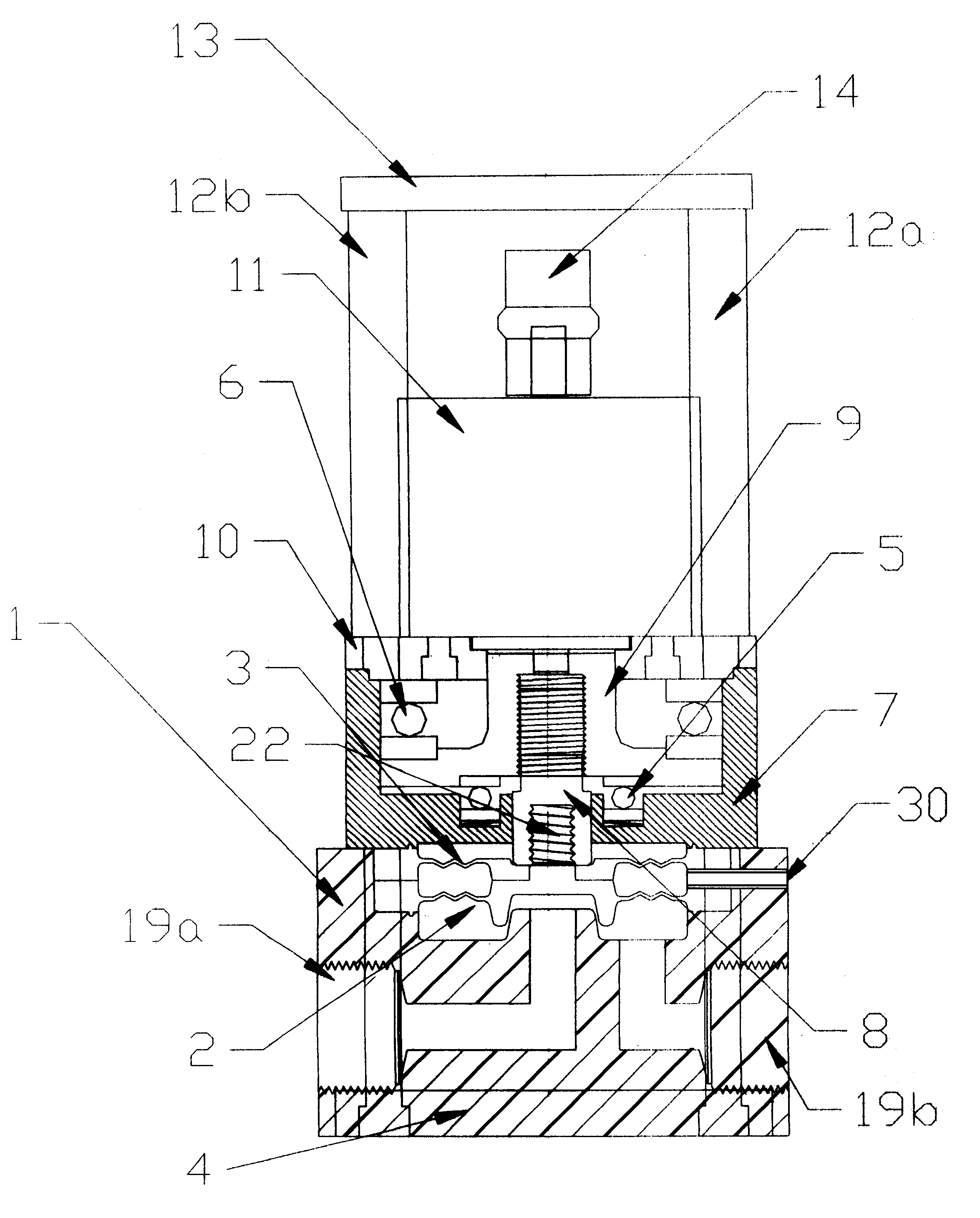Double diaphragm precision throttling valve
a technology of throttling valve and diaphragm, which is applied in the direction of diaphragm valve, engine diaphragm, operating means/release devices of valves, etc., can solve the problems of small cracks and crevasses, o-rings other materials that may not be compatible with process fluid, etc., to avoid backlash or create excessive noise or wear during operation, reduce backlash, and minimize backlash
- Summary
- Abstract
- Description
- Claims
- Application Information
AI Technical Summary
Benefits of technology
Problems solved by technology
Method used
Image
Examples
Embodiment Construction
The inlet 19a provides a threaded coupling to the users process fittings and communicates the fluid though to the integral diaphragm and throttling surface 2. From this point the fluid flow is controlled into the inner valve cavity where it is then free to flow to the exit port 19b. The valve body 1 is made from a solid block of Teflon(PTFE, in this case). The primary diaphragm 2 and back up diaphragm 3 are pinched and held in place by the drive housing 7. The drive housing is firmly attached to the valve body as described below. Sealing is accomplished without the need for o-rings by slightly over sizing the shoulders of the two diaphragms 24. The primary diaphragm has the throttling surface machined onto the lower side and a threaded stem 22 machined onto the upper side. This throttling surface is the female form of the discharge island. The threaded stem is used to connect to the drive shaft 8 as well as pinch the backup diaphragm 3 onto the primary diaphragm 2. The drive shaft 8...
PUM
 Login to View More
Login to View More Abstract
Description
Claims
Application Information
 Login to View More
Login to View More - R&D
- Intellectual Property
- Life Sciences
- Materials
- Tech Scout
- Unparalleled Data Quality
- Higher Quality Content
- 60% Fewer Hallucinations
Browse by: Latest US Patents, China's latest patents, Technical Efficacy Thesaurus, Application Domain, Technology Topic, Popular Technical Reports.
© 2025 PatSnap. All rights reserved.Legal|Privacy policy|Modern Slavery Act Transparency Statement|Sitemap|About US| Contact US: help@patsnap.com



